Safety is a paramount concern for everyone, especially for those caring for individuals with disabilities or elderly parents choosing to age in place. Maintaining independence while ensuring safety is a delicate balance. Smart assistants like Amazon Alexa and Google Assistant offer a range of features designed to enhance safety and provide peace of mind. But when it comes to critical situations, many wonder: what happens if you say “Alexa, call 911”?
While the answer isn’t a straightforward “yes,” Alexa offers a suite of features, some through subscription and others freely available, that can be incredibly helpful in emergencies. Let’s delve into Alexa’s emergency capabilities and explore how these smart speaker features can contribute to a safer environment for you and your loved ones.
Understanding Alexa and Emergency Situations
Amazon Alexa, through devices like the Echo Pop and Echo Dot, has evolved beyond simple voice commands for music and weather updates. It’s becoming a valuable tool for home safety, offering features that can be crucial in urgent situations. While Alexa’s functionality differs from directly dialing 911 from a traditional phone, it provides alternative pathways to access help, leveraging voice activation for speed and convenience when every second counts.
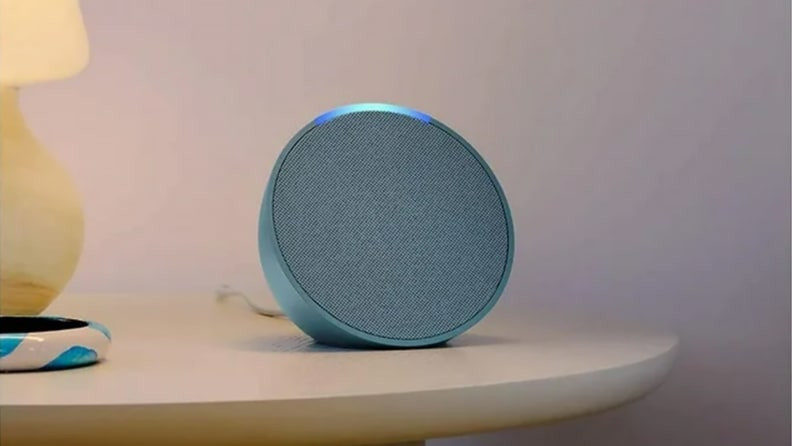 An Alexa on a nightstand.
An Alexa on a nightstand.
An Amazon Echo Pop smart speaker sits on a nightstand, showcasing its compact design and potential placement for accessibility and emergency use.
Alexa Emergency Assist: Direct Help at Your Voice Command
The most direct answer to “Can Alexa call 911?” lies in Amazon’s Emergency Assist service. For a subscription fee, this feature transforms your Alexa device into a voice-activated emergency contact system. By saying, “Alexa, call for help,” you initiate a connection with an Urgent Response agent. This isn’t a direct 911 call, but it’s designed to be a rapid and effective way to summon emergency services.
The Urgent Response agent acts as an intermediary, quickly contacting fire, police, or ambulance services based on your situation. Crucially, these agents can relay vital pre-entered information to first responders. Within the Emergency Assist section of the Alexa app, you can input critical details such as gate codes, medical conditions, the presence of pets, or any other information that could aid emergency personnel. The system is also location-aware; the agent can pinpoint the call’s origin down to the specific room where the activated Echo speaker is located, thanks to room assignments within the Alexa app.
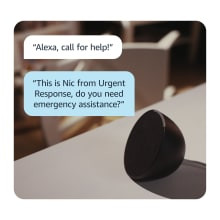 Product image of Alexa Emergency Assist
Product image of Alexa Emergency Assist
Promotional image for Alexa Emergency Assist, highlighting its role in providing quick and easy access to help during critical situations through voice commands.
Emergency Assist is a subscription service, priced at $5.99 per month or $59 annually for Amazon Prime members. Non-Prime members can also subscribe for $7.99 per month. While it adds a cost, the potential for rapid, voice-activated emergency assistance and information relay can be invaluable, especially for vulnerable individuals.
Free Alexa Safety Features You Should Know
Beyond the subscription-based Emergency Assist, Alexa offers several free features that enhance home safety and communication, useful in both everyday situations and emergencies.
1. Drop-In: Instant In-Home Communication
The Drop-In feature provides a free intercom-like system within your home using multiple Alexa devices. While it requires more than one Alexa speaker, the affordability of devices like the Echo Pop makes this feature accessible. “Alexa, drop in everywhere” activates two-way communication across all Alexa speakers in the household. Alternatively, you can target specific rooms by assigning names and locations to each speaker in the Alexa app, using commands like “Alexa, drop in on the kitchen.”
 Product image of Amazon’s Echo Pop
Product image of Amazon’s Echo Pop
Amazon’s Echo Pop product shot emphasizing its compact size and affordability, making it a practical option for deploying multiple speakers to utilize features like Drop-In for in-home communication and safety.
Drop-In is ideal for situations where someone needs to call for help within the house, or for discreetly checking in on a family member without physical intrusion. With proper setup, Drop-In can even connect speakers in different homes, allowing you to check on elderly parents remotely, initiating a conversation without them needing to answer a call or press buttons – a significant benefit in emergencies.
2. Announcements: Broadcasting Important Messages
The Announcement feature functions like a traditional public address system, allowing you to broadcast a message to all Alexa speakers in your home or connected households. For urgent messages that need to reach everyone quickly, announcements are highly effective. A simple voice command like “Alexa, announce ‘Dinner is ready!'” or in a more urgent scenario, “Alexa, announce ‘Emergency, I need help in the living room!'” can instantly communicate important information.
3. Calls and Messages: Connecting with Contacts
While Alexa without Emergency Assist cannot directly dial 911, it can make calls to your contacts via voice command. You can instruct Alexa to call someone from your contact list, dial a specific number digit by digit, or even initiate group calls. By creating named groups in the Alexa app, like “Family” or “Emergency Contacts,” you can use voice commands such as “Alexa, call Family” to quickly connect with multiple people simultaneously. Group calling increases the chances of reaching someone who can assist in an emergency, where every second matters.
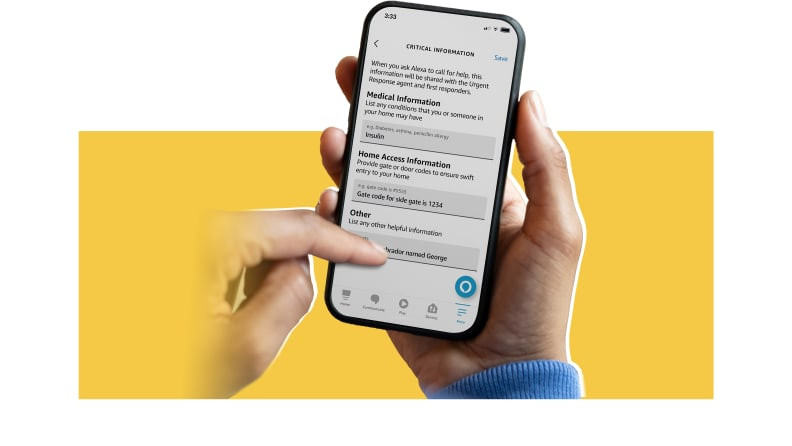 A person holding a smart phone on a yellow and white background.
A person holding a smart phone on a yellow and white background.
A person holds a smartphone, representing the traditional method of communication and contrasting with the voice-activated calling capabilities of smart assistants like Alexa in emergency situations.
Google Nest and Emergency Features: A Different Approach
Google Nest, while a competitor to Alexa in the smart home space, takes a slightly different approach to emergency features. While Google Assistant, like Alexa, cannot directly call 911 by default, a Nest Aware subscription enables emergency calling, but through the Google Home app on your smartphone. This means emergency calls are initiated via your phone, not directly through voice command to the Nest speaker itself.
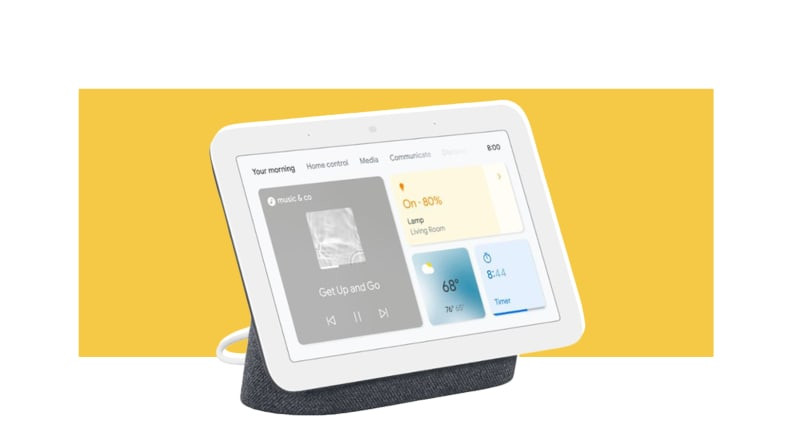 A Google tablet on a white and yellow background.
A Google tablet on a white and yellow background.
A Google Nest Hub tablet is displayed on a white and yellow backdrop, illustrating Google’s smart home ecosystem and its integration with features like emergency calling via the Nest Aware subscription.
Emergency calling with Nest Aware connects you directly to the 911 call center closest to your location, unlike Alexa’s intermediary agent system. However, the reliance on the Google Home app and your phone being accessible diminishes the hands-free, voice-activated advantage that Alexa prioritizes. If your phone is readily available, directly dialing 911 might be just as efficient.
Nest devices with sound detection, such as Nest Hubs and Nest cameras, can send notifications upon detecting smoke alarms, carbon monoxide alarms, or breaking glass. These notifications within the Nest app include a button for one-tap 911 calling, offering a quicker route to emergency services if such events are detected.
Google Nest also offers Broadcast and Calls and Messages features similar to Alexa, enabling message broadcasting to Google/Nest devices and voice calls to contacts. However, direct voice-activated 911 calling remains absent from the core Nest functionality.
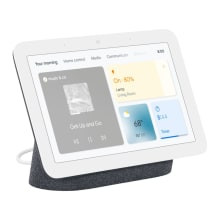 Product image of Google’s Nest Hub
Product image of Google’s Nest Hub
Google’s Nest Hub product image, highlighting its smart display capabilities and integration with Google Assistant for features like voice calls to contacts and message broadcasting.
Alexa vs. Google Nest for Emergency Safety: Which is Better?
When evaluating smart assistants specifically for emergency preparedness, Alexa, particularly with Emergency Assist, emerges as the stronger option for voice-activated help. If your primary concern is ensuring someone can call for help using just their voice, Alexa’s ecosystem, especially when paired with affordable Echo Pop speakers distributed throughout the home, presents a worthwhile investment.
Google Nest offers valuable safety features and integrates seamlessly with numerous smart devices, but its emergency calling relies on phone accessibility. For users prioritizing hands-free, voice-activated emergency access, especially in situations where reaching a phone might be difficult or impossible, Alexa’s Emergency Assist provides a more direct and efficient solution.
 Product image of Amazon’s Echo Pop
Product image of Amazon’s Echo Pop
Amazon’s Echo Pop product image reiterating its value proposition as an affordable device that provides peace of mind through Alexa’s safety features.
 Product image of Google’s Nest Hub
Product image of Google’s Nest Hub
Google’s Nest Hub product image emphasizing its role as a user-friendly and comprehensive solution for smart home integration and basic emergency preparedness.
Conclusion
Understanding what happens if you say “Alexa, call 911” reveals a nuanced picture of smart assistant emergency capabilities. While neither Alexa nor Google Nest directly dials 911 via voice command out-of-the-box, Alexa’s Emergency Assist subscription provides a voice-activated pathway to summon help through Urgent Response agents. Combined with free features like Drop-In, Announcements, and voice calling, Alexa offers a robust suite of safety tools. For those prioritizing voice-activated emergency access, particularly for vulnerable individuals, investing in Alexa and exploring Emergency Assist is a worthwhile step towards enhancing home safety and peace of mind.